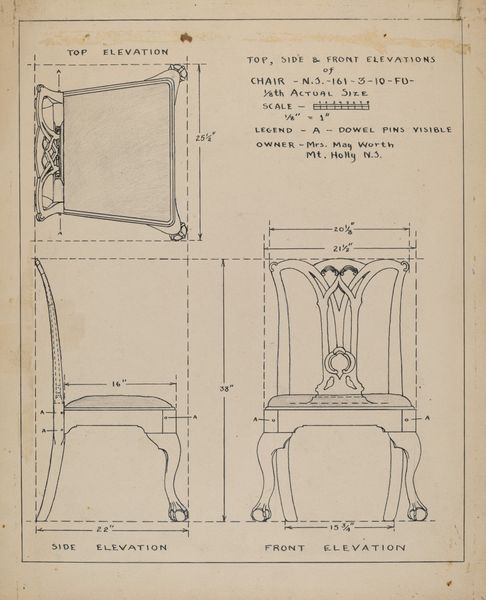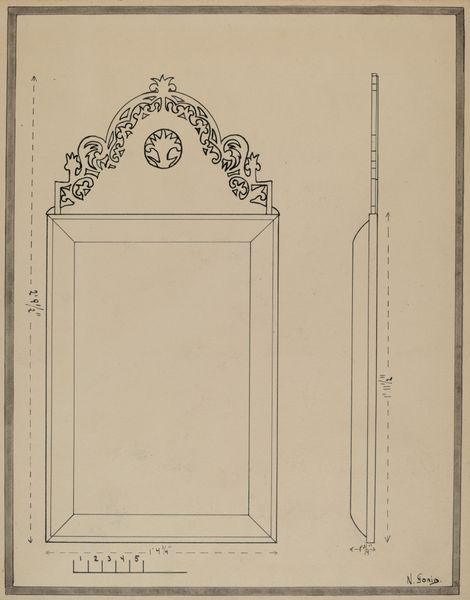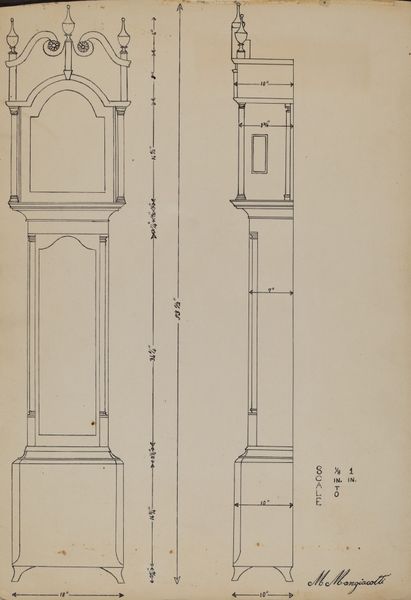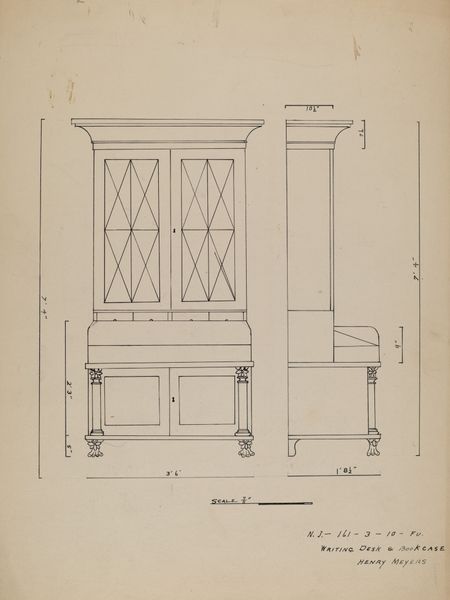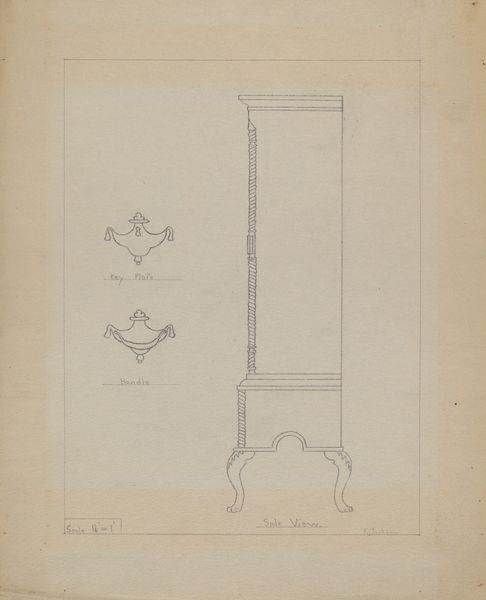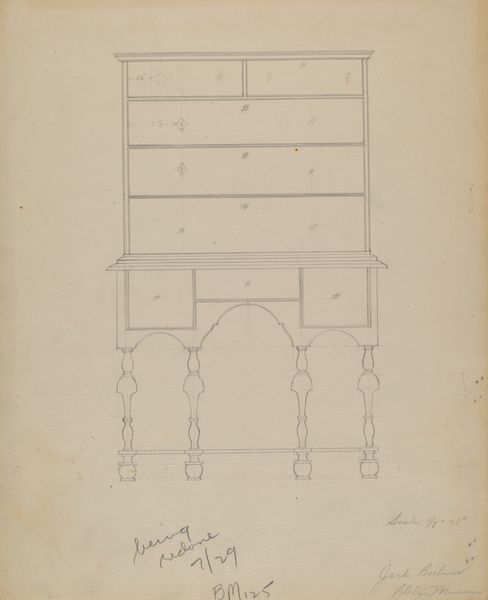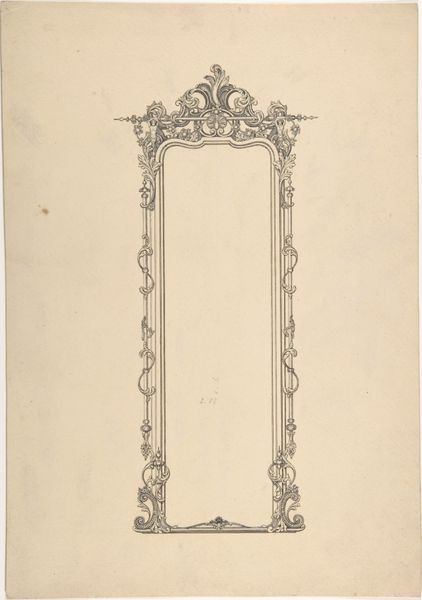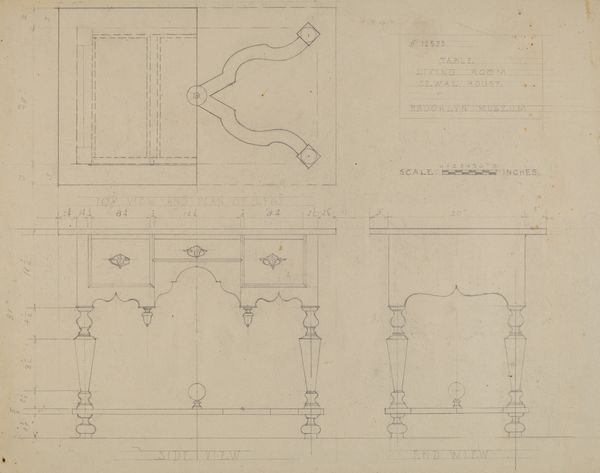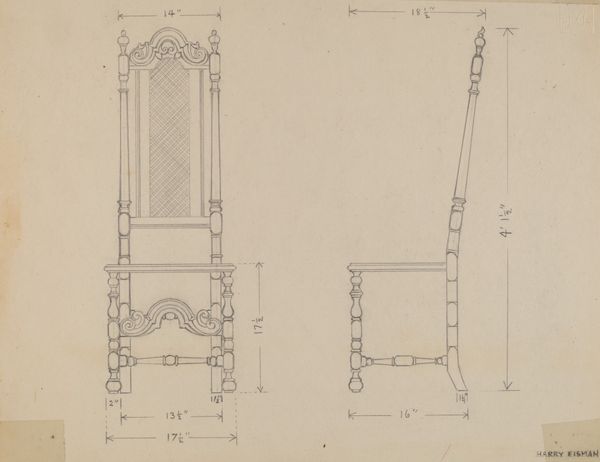
drawing, paper, pencil
#
drawing
#
paper
#
geometric
#
pencil
Dimensions: overall: 29 x 22.5 cm (11 7/16 x 8 7/8 in.)
Copyright: National Gallery of Art: CC0 1.0
Editor: Here we have B. Holst-Grubbe's "Mirror," created sometime between 1935 and 1942. It's a pencil drawing on paper, showing the design for an ornate mirror. I notice how precisely it is drawn. What’s striking is that it's not just an aesthetic design; it's like an architectural plan. What do you make of this drawing? Curator: For me, this piece invites consideration of its function as a design blueprint within a specific social context. Given that the mirror was intended for the dining hall of Plrzy Plantation House, the very choice of material, pencil on paper, speaks to the division of labor. It’s a cost-effective medium for a preparatory design, setting the stage for the eventual deployment of more lavish materials like wood, glass, and potentially gilding. The geometric rendering allows for accurate manufacture and highlights the material reality of the intended object. Editor: So you see it less as a standalone artwork, and more as a stage in a production process? Curator: Precisely! Consider the labor involved: the artist drafting the design, the craftsmen who would then translate it into a three-dimensional object, and the laborers involved in procuring the raw materials. The drawing’s clarity and geometric precision enabled efficient translation of the concept to material form, revealing the socio-economic network intrinsic to its creation. Is the mirror itself a functional object or a status symbol representing wealth? Editor: That's a perspective shift for me. Seeing this less as art and more as an early step in industrial design, reveals something I hadn't noticed about labor. Curator: Indeed. It highlights the material circumstances underpinning artistic creation and consumption in that time period.
Comments
No comments
Be the first to comment and join the conversation on the ultimate creative platform.
